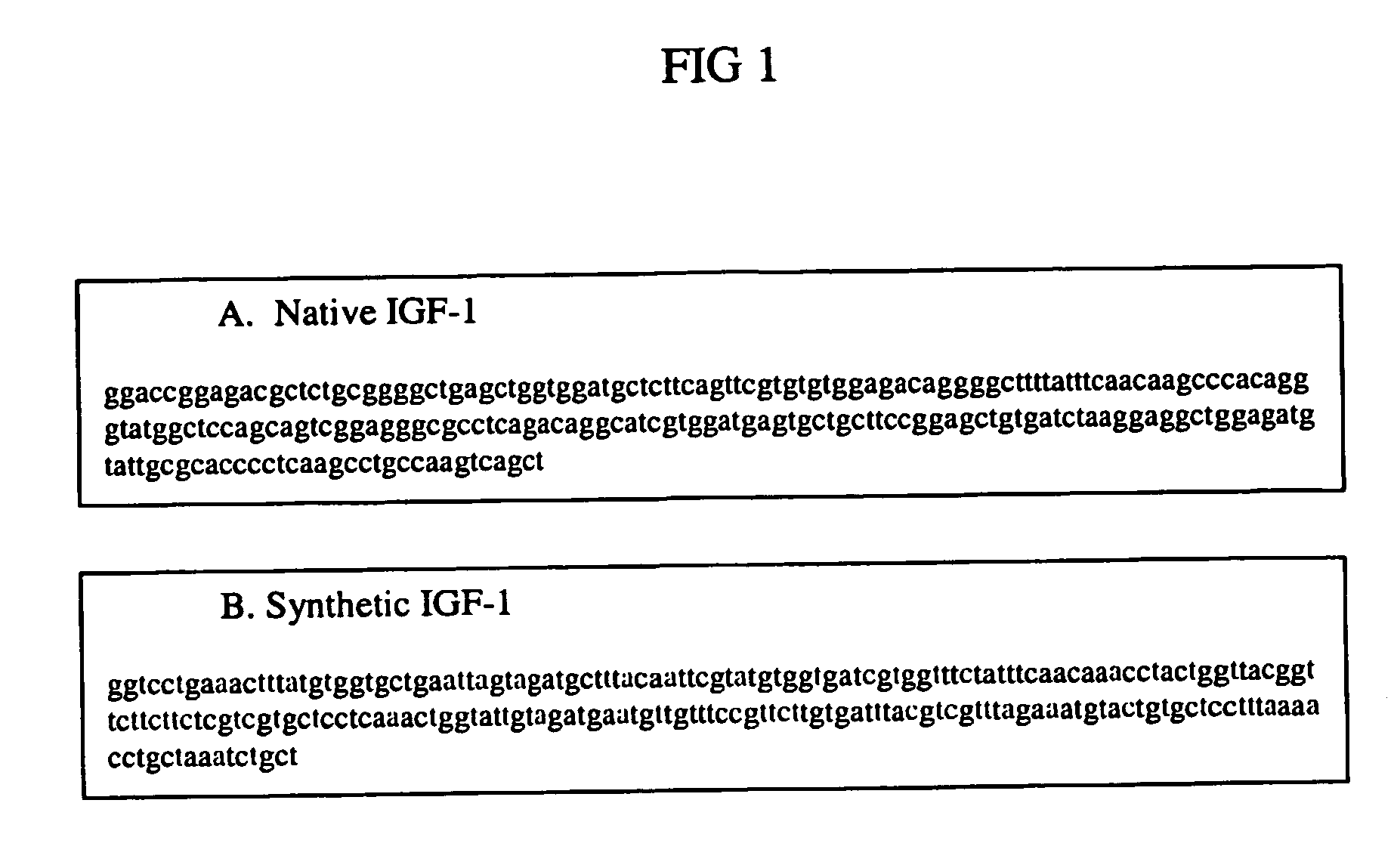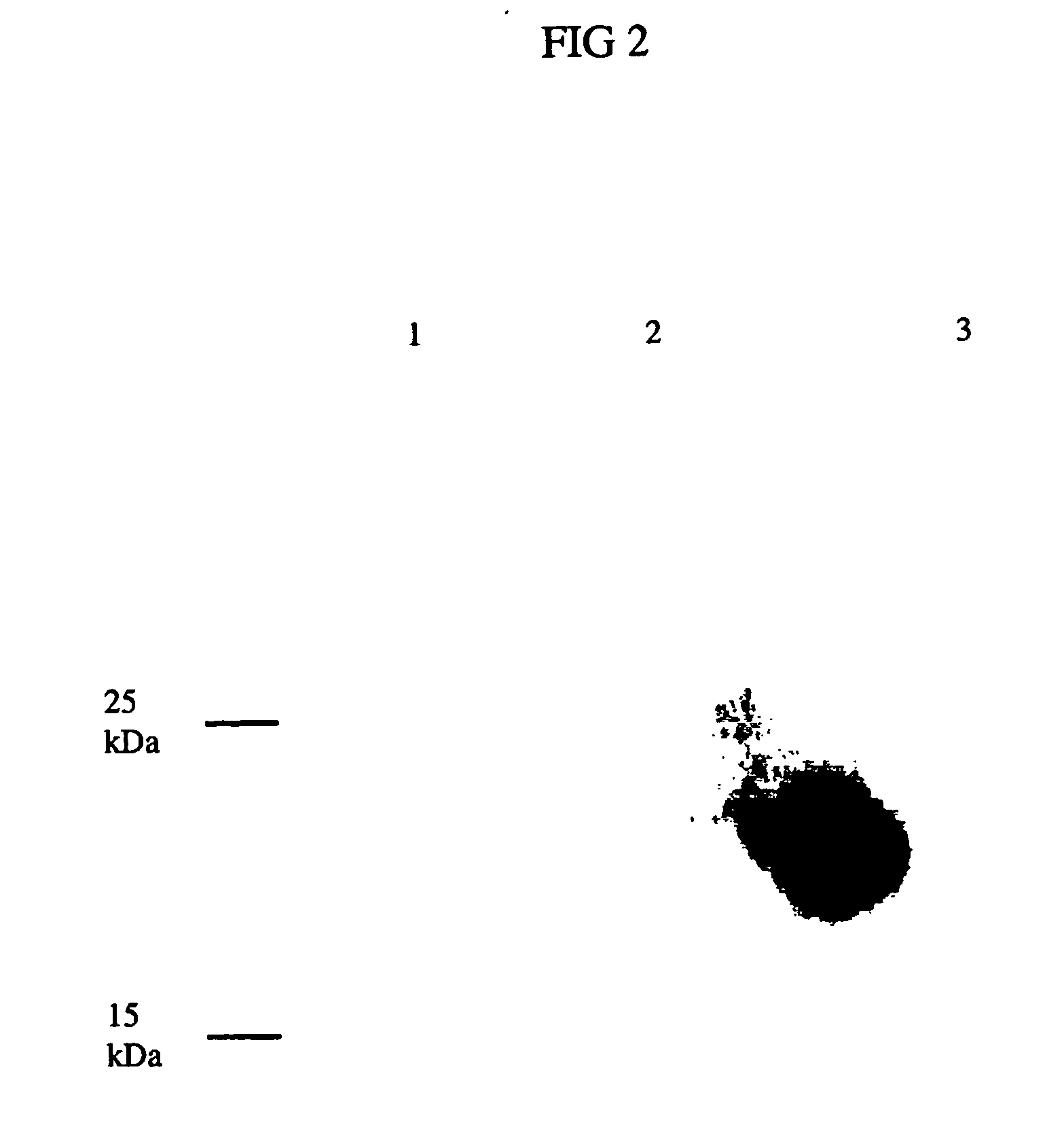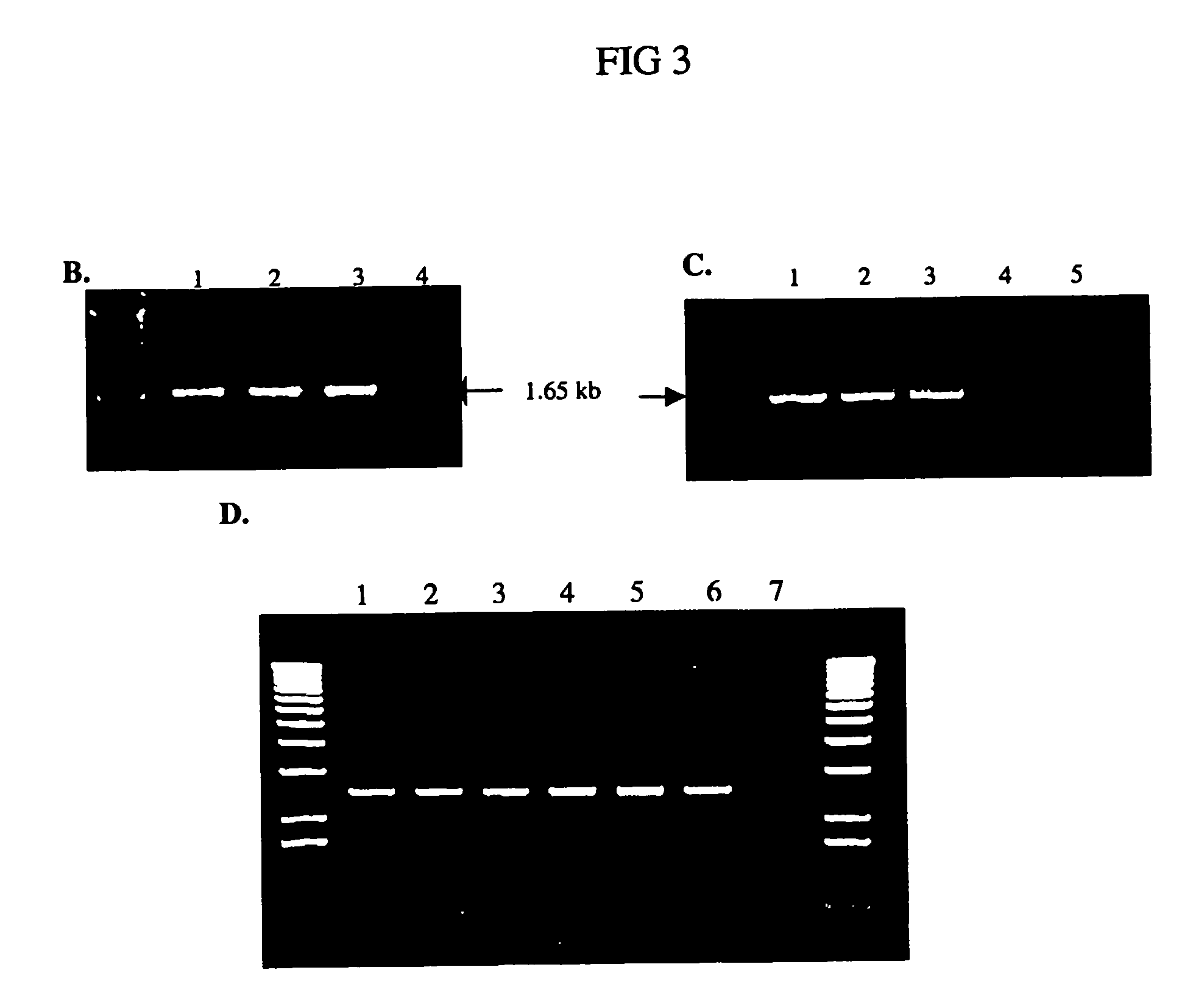Expression of the human igf-1 in transgenic plastids
a technology of plastids and igf-1, which is applied in the field of gene engineering of plant plastid genomes, can solve the problems of high cost of igf-1 treatment, many harmful side effects of people who suffer igf-1 deficiency, and inability to produce mature igf-1, and achieves the effect of higher conten
- Summary
- Abstract
- Description
- Claims
- Application Information
AI Technical Summary
Benefits of technology
Problems solved by technology
Method used
Image
Examples
example 1
ILLUSTRATIVE EXAMPLE 1
[0105] Transgenic chloroplast technology provides a good solution for recombinant protein production, because of the ability to achieve high expression levels, and the ability to fold and process eukaryotic proteins with disulfide bridges. To increase the expression levels, a synthetic IGF-1 (IGF-1s) gene with optimized codons for the tobacco chloroplast genome expression was made. Resulting in the AT content of 60% (increased from 41%). While expression of synthetic gene was observed in E. coli, no native IGF-1 gene product was detected in Western Blot. The goal was to compare expression levels of the native IGF-1 (IGF-1n) gene to the optimized, synthetic IGF-1 (IGF-1s) gene. To test the expression levels of IGF-1n and IGF-1s, tobacco plants-were transformed with the chloroplast transformation vector (pLD) containing either the IGF-1s or the IGF-1 n gene. The integration of the IGF-1 gene into the tobacco chloroplast genome was confirmed using PCR and Southern...
PUM
| Property | Measurement | Unit |
|---|---|---|
| Fraction | aaaaa | aaaaa |
| Molar density | aaaaa | aaaaa |
| Molar density | aaaaa | aaaaa |
Abstract
Description
Claims
Application Information
 Login to View More
Login to View More - R&D
- Intellectual Property
- Life Sciences
- Materials
- Tech Scout
- Unparalleled Data Quality
- Higher Quality Content
- 60% Fewer Hallucinations
Browse by: Latest US Patents, China's latest patents, Technical Efficacy Thesaurus, Application Domain, Technology Topic, Popular Technical Reports.
© 2025 PatSnap. All rights reserved.Legal|Privacy policy|Modern Slavery Act Transparency Statement|Sitemap|About US| Contact US: help@patsnap.com



